Reaching iconic Machu Picchu in the footsteps of Incas…can you imagine? The Salkantay Trek takes you through the Salkantay Pass at 4,600m and reaches the Machu Picchu ruins after trekking 70km on the 5th day.
Chances are you’ve never heard of the Salkantay trek. But I’m sure you’ve heard of Machu Picchu in Peru – lost city of Incas and one of the new 7 Wonders of the World. The Salkantay Trek ends at Machu Picchu and is a lesser known alternative trek to the classic Inca Trail.

The Inca Trail is so overcrowded it forced Peruvian government to put strict regulations, permits and limited daily access in place. Local agencies advise booking at least 4 months in advance to secure your spot on Inca Trail.
Salkantay Trek is a great alternative, without the crowds. It was named by National Geographic Adventure Travel Magazine among the 25 best treks in the world.
Everyone wants to see Machu Picchu and many people choose to get there by foot rather than by train or a car. You feel like you deserve the view after trekking for days.
I can’t imagine a better way to see the landscapes and reaching Machu Picchu.

Preparing for the trek
Cusco used to be a capital of the Incan Empire. Now it’s a base for traveling to Machu Picchu, many other ruins, trekking trails and trips surrounding the city. Whether you are looking for a cultural trip or an adventure, you can find it in Cusco.
After arriving in Cusco, we’ve hiked the beautiful Rainbow Mountain, or as locals call it “Gringo killer”. Even after acclimatizing in Cusco at 3,400m people get sick hiking to Rainbow Mountain which lies at 5,200m. The Salkantay trek is no different; it requires acclimatization in Cusco for at least 2 days.

Really helpful is drinking lots of water or coca tea. You will find it on every corner – every restaurant or street stall offers either coca tea or coca leaves. Cusco grocery store and gift shops also have coca chocolate, coca candies, coca cookies, energy coca bars and really anything infused with coca.
We were happy to find out that we don’t need any permits and booking the Salkantay Trek is not only easy but very budget friendly.
Basic info about Salkantay Trek
Distance: 72 km
The trek usually starts in town Mollepata but our group started between Mollepata and Soraypampa. According to our GPS, it’s 72km to Aguas Calientes, also called ‘Machu Picchu town’ from which the ruins are visited.

Time: 5 days (usually)
We spent a full day at Machu Picchu ruins, hiking up the Machu Picchu Mountain and went back to Cusco on the 6th day. The trek can be done in 3 or 4 days if you’re hiking independently.
Altitude
It’s all over the place:
– Cusco is at 3,400m
– the highest point is Salkantay Pass at 4,600m reached on the 2nd day
– the lowest point is Hydroelectric Plant at 1,800m
– Machu Picchu ruins are at 2,430m
– Machu Picchu Mountain is at 3,061m
Starting point & finish: Mollepata (or Soraypampa) & Machu Picchu

There is a road to Soraypampa and it’s possible to start there and shorten the trek. We started halfway between Mollepata and Soraypampa. The traditional end is at the Machu Picchu ruins. We decided to go a bit further and hike up the Machu Picchu Mountain at 3,061m.
Salkantay trekking to Machu Picchu, our experience
Day 1: to Soraypampa 11km, 780m elevation
Cusco was still sleeping when we left for the trek. After a few hours, we arrived at Molletapo where we had breakfast at the local buffet. Omelette and coca tea always fuel our bodies very well in Peru.

We drove halfway to Soraypampa and met our porter with horses that carried our backpacks. We only had 11km to the camp and it was the easiest part of the whole trek. Apart from the initial short uphill, the trail was flat all along. We walked parallel to the dirt road which some companies use to start the Salkantay Trek in Soraypampa.
The beautiful warm day turned into mayhem pretty quickly. Heavy rain held us hostage for a couple of hours in the camp. We were ecstatic when it stopped and went for a short hike to Laguna Humantay. It’s straight uphill and reaching it took a long time. Breathing at high altitude still wasn’t easy, even after spending weeks in the Cordillera Blanca and few days in Cusco.
Usually, a blue lake was covered in clouds. We considered it as a training for trekking over the pass the next day.
Day 2: Soraypampa to Collpapampa 21km, 920m elevation
It was uphill from the camp for a few hours. We were slowly walking up the Salkantay Pass and all of us had troubles breathing in such high altitude. I was hit the hardest because I’m not usually the last one on the trek. Luckily the picturesque alpine meadows and mountain peaks are such an unbelievable scenery, I wanted to take breaks even when I didn’t have to.

The higher we got, the more clouds rolled in and it started to rain. When we finally reached the Salkantay Pass at 4,600m, it was pouring rain. We couldn’t see the Mount Salkantay, a sacred mountain of Peruvians and the highest peak of Vilcabamba mountain range reaching 6,271m. Our guide performed an ancient Incan ceremony with coca leaves and I could hardly listen to him trying to catch my breath.
Going down was much easier (of course). Enjoying the views we jumped over rocks and ran downhill. After a break with yet another delicious lunch, we continued walking downhill and all of a sudden reached a tipping point – rocky trail turned into mud and we were surrounded by lush green plants in the rainforest. Temperatures rose and so did our pace.

After descending around 1,000 meters we reached Collpapampa village and stayed overnight.
Day 3: Collpapampa to Sahuayaco 17km, 515m elevation (+ride to Santa Teresa)
The original Salkantay trail was under threat from mudslides and we had to walk on the other side of the river on the flat dirt road. A drawback of visiting Peru during the rainy season.
We waited for the group in Sahuayaco with a beer in hand when a van with our guide pulled over to pick us up. We couldn’t believe we have to break off walking to Machu Picchu for a downhill drive to Santa Teresa.

If only we could rent bikes in that moment, at least…
This relaxing day was going to get even better. We stayed at a camp with restaurant, showers, and hammocks and spent the afternoon at nearby thermal pools with a view of the surrounding Andes.
Day 4: Santa Teresa to Aguas Calientes 22km, 620m
Hottest day of the trek. Few people from the group opted for a zipline tour with a ride to Hidroelectrica. We opted to go by foot and walked for 2 hours on the road under a gruesome sun. We had enough time in Hidroelectrica to cool off and have lunch.

Hidroelectrica is a place where vans drop off tourists who are visiting Machu Picchu from Cusco. There are a few restaurants and food stands with fresh fruit, drinks, and sandwiches.
After our lunch, the whole group started to walk following the railway tracks to Aguas Calientes. We were surprised to find many accommodation/camping options, restaurants and food stands along the way.
And there it was. A glimpse of Machu Picchu! So close to the famous Incan ruins, yet one more night before reaching them.

We went to our hotel to relax for a bit and later wandered around the little town Aguas Calientes. We found a local market with fresh fruit juices and bought some food for the next day spending at Machu Picchu ruins.
Day 5: Aguas Calientes to Machu Picchu ruins and to Machu Picchu Mountain 11km, 1170m elevation
Finally the big day. We woke up at 4:30 am and lined up at the gate to Machu Picchu. Some people opted to go by bus but we were determined to our initial goal of reaching Machu Picchu on foot. We started to climb hundreds of stairs in pitch dark at 5:00 am in humid and hot jungle weather.
When we got to the entrance one hour later, hundreds of people were waiting there.

The famous Incan city was hiding in a morning fog for a few hours. After our guide showed us around the ruins, we made our way to the entrance to climb Machu Picchu Mountain. Did you know you can experience much more than seeing ruins with hundreds of tourists competing for the same photo?
Machu Picchu was built at elevation 2,430 meters but seeing the city from a mountain 3,050 m high with surrounding mountain peaks, deep valleys and river takes it to another level.
We went to see Machu Picchu from the highest point possible!
Climbing the Machu Picchu Mountain is the second part of any Machu Picchu experience. You can read more about our experience here: Machu Picchu Mountain hike (what is Machu Picchu Mountain, how challenging is it to get there and newest info about prices and regulations of visiting Machu Picchu)
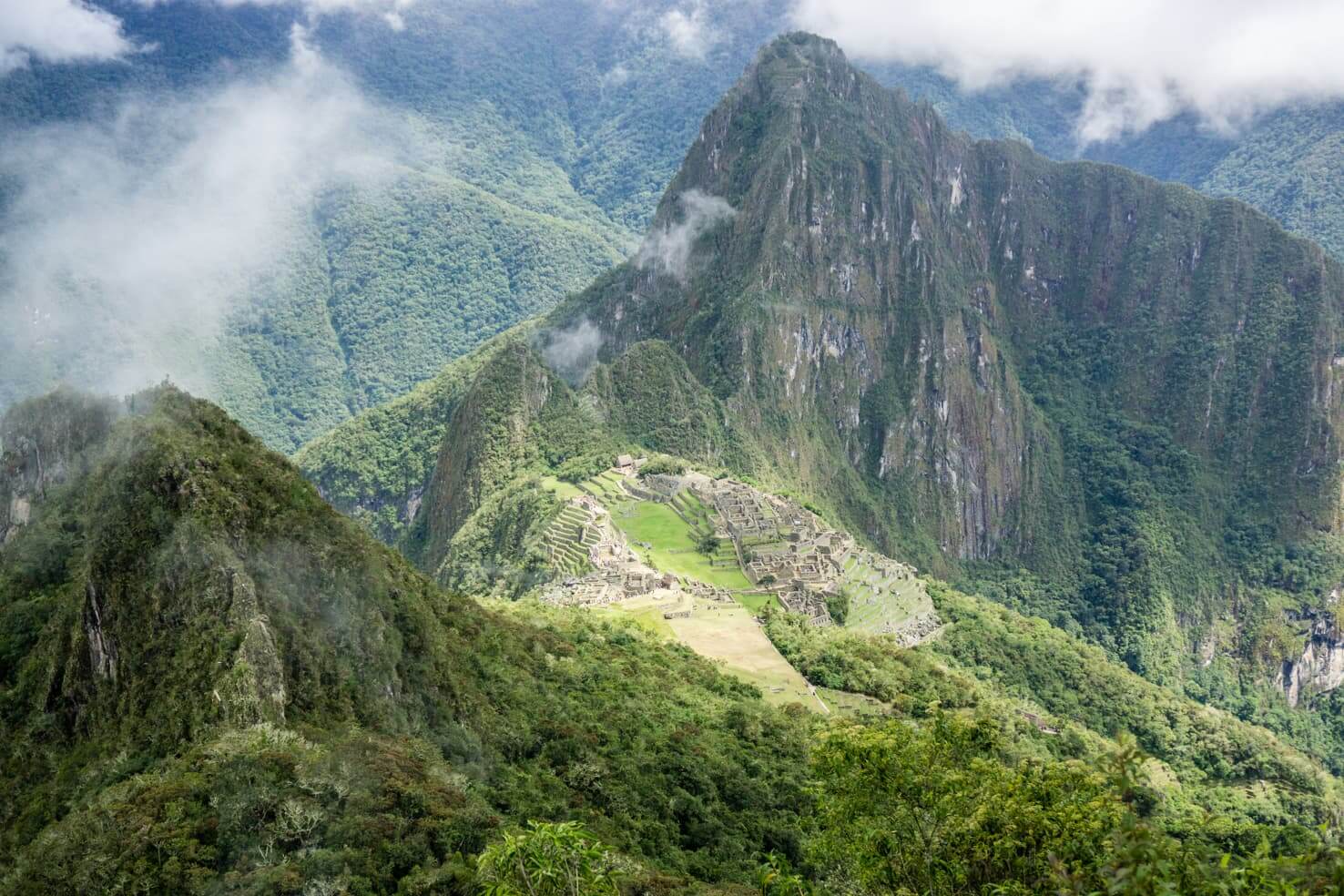
The view from the top is more than spectacular. All the exhaustion almost completely went away as we stared at Machu Picchu from Machu Picchu Mountain feeling fully accomplished.
Day 6: Aguas Calientes to Hidroelectrica 12km, 200m elevation (+ ride to Cusco)
While most people from our group went back to Cusco on the 5th day, we decided to spend here one more day. Since we visited during the rainy season, if we didn’t see Machu Picchu the 5th day, we would buy tickets and go again the next day. Something we were prepared to do. You don’t go to Machu Picchu every year and when you do, you want to have the best view.
It was pouring rain all day. Even though the prices in Aguas Calientes were higher than in other parts of Peru, the local market didn’t disappoint where we fuelled our bodies with breakfast.
We went back to Hidroelectrica, walking along the railroad tracks with our ponchos on. Just before reaching the end of our walk, a delicious smell from the restaurant lured us in. Soup, main course, and drink for 10 soles (3 USD)!

Satisfied from lunch, we came to Hidroelectrica just in time for our van to pick us up. There were plenty of vans and hundreds of people waiting for theirs but no system whatsoever. The chaos wasn’t the biggest problem. The biggest problem was to find our driver. Each driver had a list of names written on a piece of paper half soaked from the rain. And identifying who is a driver wasn’t easy either.
After about an hour or so of running around and checking with every person waving with a paper with a list of names, we finally found our driver.
The road back to Cusco was a long one. Anyone prone to car sickness wasn’t happy either. We passed several random waterfalls spilled over the roads as our van slowly made its way through. It was easy to see why so many mudslides happen here.
And 6,5 hours later we arrived in Cusco.
Final thoughts
It was an exhausting and incredibly rewarding trip. Another one from Peru we will remember for the rest of our lives.
Not so much the tiredness or annoying guide but the scenery, the views, overcoming the pains and reward of seeing Machu Picchu after trekking 4 days through the Andes.

We would recommend anyone wanting to see Machu Picchu set a time aside and get there like true explorers, on foot. You get a much bigger sense of accomplishment than getting to Machu Picchu by van or train.
Just a few more notes for your information…
Trekking Salkantay trek with a guide versus independently
The whole 5-day trek including 3 meals a day, transport to the trek and back to Cusco by van, sleeping gear, guides, tickets to Machu Picchu, Machu Picchu Mountain and 2 nights in Aguas Calientes cost us 200USD per person (in February 2017).
We were a group of 10 people and 2 guides. At the end of the trek when you are supposed to tip the cooks and guides, our guide particularly made a big deal out of it. He went on to tell us exactly how much we should tip per person, leaving a lot of people uncomfortable. And unfortunately, he went too far where he overheard people talking about it, called a ‘group meeting’ and started to explain how far each of the cooks is from home to cook for us on our trip. He was really trying to make us feel bad.

Guides and cooks were doing their job and people should decide themselves how much to tip. This wasn’t our first guided trek in South America and we always tipped how we felt was appropriate and this trek was no exception. As you can see, the end of the trek felt bittersweet.
This is just a heads up in case you encounter the same. Don’t feel discouraged by any guide and tip how much you’d like.
If we were to go again, we would go independently. Gear can be easily rented or bought in Cusco, there are many options for camping along the way and you get to choose when to go without restrictions of a group. It is not a difficult trek and the trail is easy to follow. Read this independent guide for more info.
However, if you have no experience and are worried about carrying all the gear, choose a guided tour. You get to know new people and have fun along the way. The group always waits, not leaving anyone far behind and you will not be rushed. The high altitude makes it harder for everyone.

Why we chose Salkantay Trek over Inca Trail
Inca trail needs to be booked months in advance because it’s so popular and there is only allowed a limited number of people per day. We traveled without schedule and were booking everything last minute. You can’t go trekking independently, you need to go with a guide and have permission. It is usually more crowded than Salkantay Trek and it’s also easier. Both Inca Trail and Salkantay Trek follow a path of ancient Incas to Machu Picchu.
Salkantay Trek is longer, more challenging and can be booked last minute as no permission is needed. You trek through different a different scenery each day. And it’s also much cheaper (hundreds of dollars cheaper).
Recommended packing list for Salkantay Trek
You will experience the different scenery, altitude, and environment every day of the trek. It might snow or rain on the pass and it’s hot in the rainforest near Machu Picchu so you need to be prepared for everything.

If you’re trekking with a guide, the company will also arrange mules to carry the camping equipment and your big backpack (8 kg limit per person). You only need to carry a daypack. On the last part, the train will bring your backpacks to Aguas Calientes but you will need to carry everything on the way back – 12 km along railroad tracks to Hidroelectrica to the van.
- Backpack 20-30l – ideal as a daypack
- Trail running shoes – the trail is 90% dirt and there is no need to have hiking boots. I was wearing new hiking boots to break them in but they were very unnecessary for this trek.
- Lifestraw water bottle – we use this bottle everywhere. We fill up 0,7l from the river and drink directly from the bottle with a filter. There are many water streams along the Salkantay Trek.
- Cash + passport (you won’t be allowed to enter Machu Picchu unless they check your passport)
- Personal toiletries + small towel – both campgrounds had running water
- Toilet paper – essential item of every hiker
- Camera + external battery pack – Sony Alpha a6000 is our all time favourite, very light for backpacking and captures light in every condition
- Snacks – just a few chocolate bars we like

Clothing – each of us had:
- 2-3 pairs of socks
- 2 hiking pants or leggings (1 for the night)
- regular amount of underwear
- 2 hiking shirts (1 for the night) – we use merino shirts for treks because you can use just 1 for 4 days and it won’t smell
- 1 long sleeve shirt – you’ll need layers on the mountain pass
- Fleece or down jacket
- Rain jacket
- Hat & bandana
- Sunglasses & sunscreen
- Swimsuit – for thermal pools
Final tips for Salkantay Trek
Be careful when booking in advance. Many companies offer overpriced tours. A couple in our group paid twice as much as we did. And we all got the same service. Salkantay Trek doesn’t need to be booked in advance; a local agency in Cusco confirmed they always have space or form a new group.

Acclimatizing for high altitude
Acclimatize in Cusco for a few days before going on a trek. You’ll go from 3,400 meters to 4,600 meters on Salkantay Pass and you want to prevent having a headache as much as you can. Every individual is different, I had a headache the 2nd day after spending weeks at high altitude.
Drinking water
You can buy bottled water along the way but there is no need if you carry a Lifestraw bottle. Fill up in the rivers along the way. A constant supply of coca tea will be available with each meal and it helps to deal with the altitude.
Season
Salkantay Trek can be done all year round. The dry season is from May to September and the rainy season from November to March. The most stable weather is during the busiest times – July and August. Your best bet is to visit during the shoulder season in April & May or September & October.
Guidebooks
- Peru travel guide – country wide guidebook, a favourite book for every traveler (digital version also available)
- Adventure map of Peru a very detailed map, ideal for planning
- Turn right at Machu Picchu – funny and interesting read about a place everyone wants to visit in Peru

Machu Picchu tickets
Tickets are included in the price of the trek. The tour agency will buy tickets for you. There have been some changes to visiting Machu Picchu – you can buy a morning ticket or afternoon ticket. If you want to climb the Machu Picchu Mountain, you need to go in the morning, we have more info here: Machu Picchu Mountain hike.
*In the spirit of full disclosure: Some links in this post are affiliate links, which means that if you purchase through them, we receive a small commission at no extra cost to you. We appreciate your support!
More treks from South America
Which option to get to Machu Picchu will you choose?
Spread the word! PIN this to your Pinterest board.




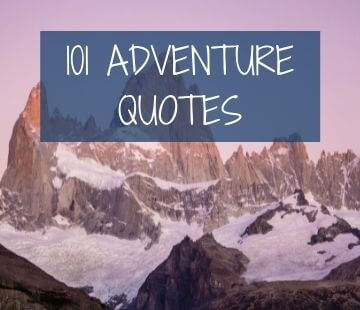
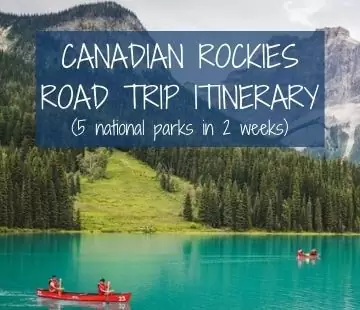
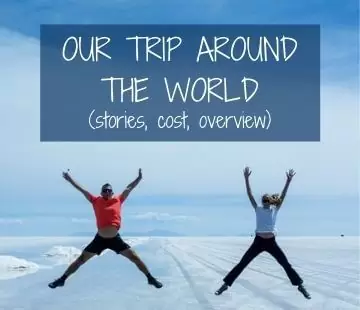

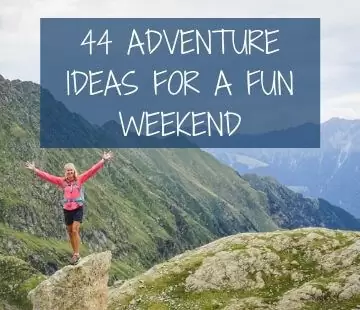

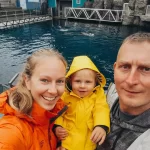


Thanks so much for this post, it was super helpful! I’m planning on doing this hike in August and so far, this is the most informative post I’ve come across. Cheers!
Glad it helped Dylan, enjoy beautiful Peru!
what company did you use? thanks for the great article!
I don’t remember the name of the travel agency we used but it was on the ground floor of Hostal Margarita in Cusco. You can also try agency Peru travel explorer, they offer the Salkantay trek for the same price.
Great post about Salkantay trek, thank you. I’m considering doing the trek without a guide in December with my girlfriend. When was it you did the trek and would you recommend trekking without guide in rainy season?
Hey Tommi, we did the trek in February, in rainy season, and had rain only one night, fog during two afternoons and of course snow on the pass. The day after we’ve visited Machu Picchu was pouring rain all day (so Machu Picchu wasn’t visible). We enjoyed it anyway! When you have once in a lifetime opportunity, you bite the bullet and go 😉 I would suggest to ask at your hostel before your departure about conditions of the trek, landslides on the trek happen, even though rarely so ask which route to take.
HI!
Thanks a lot about the Salamanca details!
I just have 2 questions:
– Is the Waynapicchu mountain included into the trip?
– If you don’t book in advance the trek, how do you know you’ll still have room the day you’ll be there, as I believe it’s limited?
Thank you very much
When you book your Salkantay trek through travel agency and ask for a ticket to Machu Picchu and Wayna Picchu, then it will be included in the price. They included everything into our price. This trek is not limited so you can book when you come and get a cheaper price than booking online in advance (only Machu Picchu trek is limited and needs to be booked months in advance).